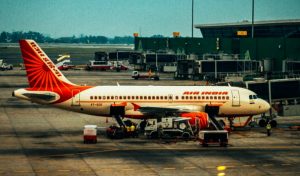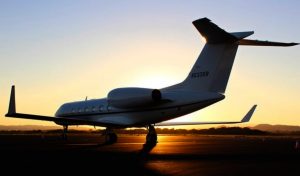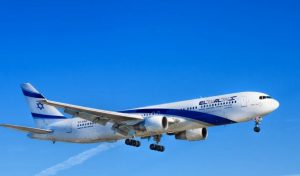Advantages and Disadvantages Of Air Transportation: Air transport is the use of planes, jets, rockets, helicopters, and drones to transfer passengers and cargo from one area to another in the air. However, there are other methods of air transportation that may or may not be used for delivering products but may be utilized for recreational reasons, such as hot air balloons, blimps, gliders, hang gliding, and parachuting, among others.
Air transportation is the most recent kind of transportation; it was first demonstrated in 1903 and evolved into a full mode of travel for people and freight in the 1930s. over the Years, there has been an immense development in air transport, jet engines have replaced propellers, radar has been introduced, aircraft have increased in size to jumbo dimensions, supersonic speeds have been attained, and vertical take-off is now conceivable.

Recommended: How to introduce yourself professionally
The Different types of air transport
1. Blimp: A blimp is also known as an airship, and it is a type of hot air balloon. Blimps have been around since the late 1800s and were originally utilized as reconnaissance vehicles by several military. Blimps, on the other hand, are being developed as a handy and cost-effective mode of transportation and advertising. People are transported by blimps and hot air balloons for leisure purposes. They cover a small area, allowing travelers to observe a site from a different perspective than if they were viewing it from the land.

2. Commercial airplanes: These are the most popular routes for people to travel by air; compared to other forms of transportation such as road, rail, and water, commercial planes provide a faster mode of transit. Hundreds of passengers can be transported from one area to another at the same time on planes with seats separated into two or four classes.
3. Private aircraft: Private planes are designed to transport a single person or a maximum of five persons at a time. Private planes range in size from the tiniest Cessna to the most luxurious Citation CJ1, which seats up to five persons in leather seats. These planes give luxury and privacy while traveling from one area to another, and they can be used for business or pleasure.
Also read: Advantages and Disadvantages of division of labor
4. Helicopters: Another quick kind of air transportation, helicopters convey passengers through the air. they have substantially less passenger capacity than traditional airplanes and can only transport a few people at a time, whereas commercial jets can transport hundreds.
5. Rockets: A rocket is any aircraft that employs a rocket engine, such as a missile, a spaceship, or an airplane. Rockets have been employed for small-scale military operations and recreational demonstrations since at least the 13th century. The engines operate on the principle of action and reaction, propelling the rockets ahead by releasing their exhaust in the opposite direction at high speeds, and hence can operate in the vastness of space.
6. Glider: A glider, sometimes known as a sailplane, is a form of glider aircraft used for leisure purposes or in the sport of gliding. When flown in rising air, sailplanes are aerodynamically streamlined and capable of increasing height. The wings of some contemporary gliders are comprised of synthetic sailcloth covered with an aluminum, alloy, or composite structure.
7. Zeppelin: A Zeppelin is a type of rigid airship named after German Count Ferdinand von Zeppelin. It is made out of a cigar-shaped, coiled, and coated frame that is sustained by internal gas chambers. In the early twentieth century, Count Ferdinand von Zeppelin invented Zeppelin. Zeppelins resemble blimps in appearance but vary in two ways: they have a metal skeleton with a hard covering and they float on hydrogen gas. When compared to blimps, these two factors made zeppelins bigger.
Recommended: Differences between a clause and phrase
The advantages of air transportation
1. Air travel is a source of employment and wealth: The airline sector has a significant economic influence, both via its own operations and through collaborating with others as a catalyst for other industries. It makes a direct and indirect contribution and induced effects, both of which are linked to the overall income of the aviation industry.
a. Direct impact: These include airline and airport operations, aircraft maintenance, air traffic management and regulation, and activities directly servicing air passengers, such as check-in, luggage handling, on-site shopping, and catering. Not all of these actions must take place at an airport; some may take place at headquarters.
The actions of aerospace manufacturers supplying aircraft and components to airlines and allied enterprises have direct impacts as well. Airlines and airports (aviation sector) employ 4.3 million people worldwide, delivering roughly US$ 275 billion in GDP to the global economy, out of the 5 million direct employments provided by the air transport industry. This is a global sector that rivals the pharmaceuticals industry in size.
b. Indirect impacts: These include work with aviation fuel providers, construction businesses that create additional facilities, the production of items sold in airport retail stores, and a wide range of operations in the business services sector (call centers, IT, accounting, and so on). The air transportation sector supports 5.8 million indirect employments via purchases of products and services.
Jobs in the energy sector are created via the purchase of airplane fuel; jobs in the IT sector provide computer systems for the airline business; and employees required to manufacture retail products are just a few examples.
These indirect employments are worth US$ 375 billion to the global economy.

c. Induced impacts: These include spending by persons directly or indirectly working in the aviation industry, which supports jobs in businesses such as retail, consumer goods manufacturing, and a variety of service industries (e.g., banking, restaurants, and so on). Employees in the air transportation business (direct or indirect) use their earnings to buy products and services for their personal consumption, resulting in 2.7 million induced employments.
Jobs in retail and a variety of service industries are included. US$ 175 billion is the induced contribution to world GDP.
Air travel generates a broader catalytic (spin-off) effect.
2. Air travel supports global trade: It allows nations to participate in the global market by boosting access to major markets and allowing manufacturing to be globalized. Air travel encourages nations to concentrate in areas where they have a competitive advantage, as well as trade with other countries that produce goods and services.
3. Air transport is indispensable for tourism: It is indispensable for tourism particularly for remote and island destinations. Tourism actively supports airline and airport jobs, and tourist spending generates a significant number of jobs in the tourism industry.
4. Air transport boosts productivity across the global economy: Improved transportation linkages broaden the market in which businesses may compete. As a result, businesses are better equipped to take advantage of economies of scale, lowering costs, and specializing in areas where they have a competitive edge. Air services expose corporations to harsher competition by opening new markets, which encourages them to become more efficient.
Also see: Advantages and Disadvantages of shopping online
5. The efficiency of the supply chain is improved by air transportation: Many businesses, for example, employ air transportation to minimize delivery times as part of their just-in-time delivery systems, allowing them to deliver items to clients fast and reliably while lowering costs.
6. Speed: It is a high-speed mode of transportation. Passengers and products can be conveniently transferred from one location to another.
7. Minimum cost: Unlike trains and road travel, there is no need to invest money on track or road building; just airports must be built.
8. Physical impediments are removed: Physical obstacles such as rivers, mountains, and valleys do not affect air travel.
9. Effectiveness: When compared to land travel, an airplane can transport a big number of people or freight in a comparatively short length of time. According to Rick Seaney of the air travel price website Fare Compare, airline on-time rates have improved, and tarmac delays of more than three hours are punishable. For automobile travel, there are no such guarantees or payments.
On a long-distance travel, a car may face traffic numerous times, costing passengers hours of wasted time as well as engine damage and mileage. During a flight, there are no stops for restroom breaks, fuel replenishment, or leg stretching.
Recommended: Differences between Subsistence and Commercial Agriculture
The Disadvantages of Air Transportation
1. High cost: Air travel is an expensive service. Its operating expenditures are too expensive
2. More Dangers: Air travel is prone to mishaps. A little blunder can put travelers in grave peril. Plane hijacking is a common occurrence.
3. Huge Financial Investments: Huge sums of money are required to build aviation infrastructure. Airplanes, airfield construction and maintenance, and control mechanisms all require capital investment.
Also see: Causes, Effects and Solutions to Conflict in Africa
4. Unreliable: Air travel is unreliable since it is dependent on weather forecasts. In most cases, if the weather is uncertain, the flight will be delayed.
5. Emergencies in Medicine: On transatlantic flights, medical emergencies are a risk since the jet might be a long distance from the nearest airport and medical care.
Although there is some risk if a passenger requires rapid medical assistance, planes operating these routes are equipped with medical equipment such as defibrillators and have flight crews trained to utilize them.
6. Mechanical Issues: As the distance between safe landing spots grows, so does the risk of anything going wrong with the plane mechanically.
Mechanical issues that endanger a flight are uncommon, yet they can arise at any time. If a problem arises, flying too far from the nearest airport, especially on transatlantic flights, might be a worry.
Recommended: Best and most reliable travel agent in Nigeria
Conclusion
Air travel is a critical component of economic development and progress. On a national, regional, and worldwide scale, air transportation allows integration into the global economy and offers critical connections. It contributes to the growth of trade, tourism, and job creation. For more than sixty years, the World Bank has supported aviation projects. Today, the WBG is working on initiatives involving air transport policy and regulation, safety, infrastructure restoration, institutional improvement, and capacity building in every area.

Edeh Samuel Chukwuemeka, ACMC, is a lawyer and a certified mediator/conciliator in Nigeria. He is also a developer with knowledge in various programming languages. Samuel is determined to leverage his skills in technology, SEO, and legal practice to revolutionize the legal profession worldwide by creating web and mobile applications that simplify legal research. Sam is also passionate about educating and providing valuable information to people.